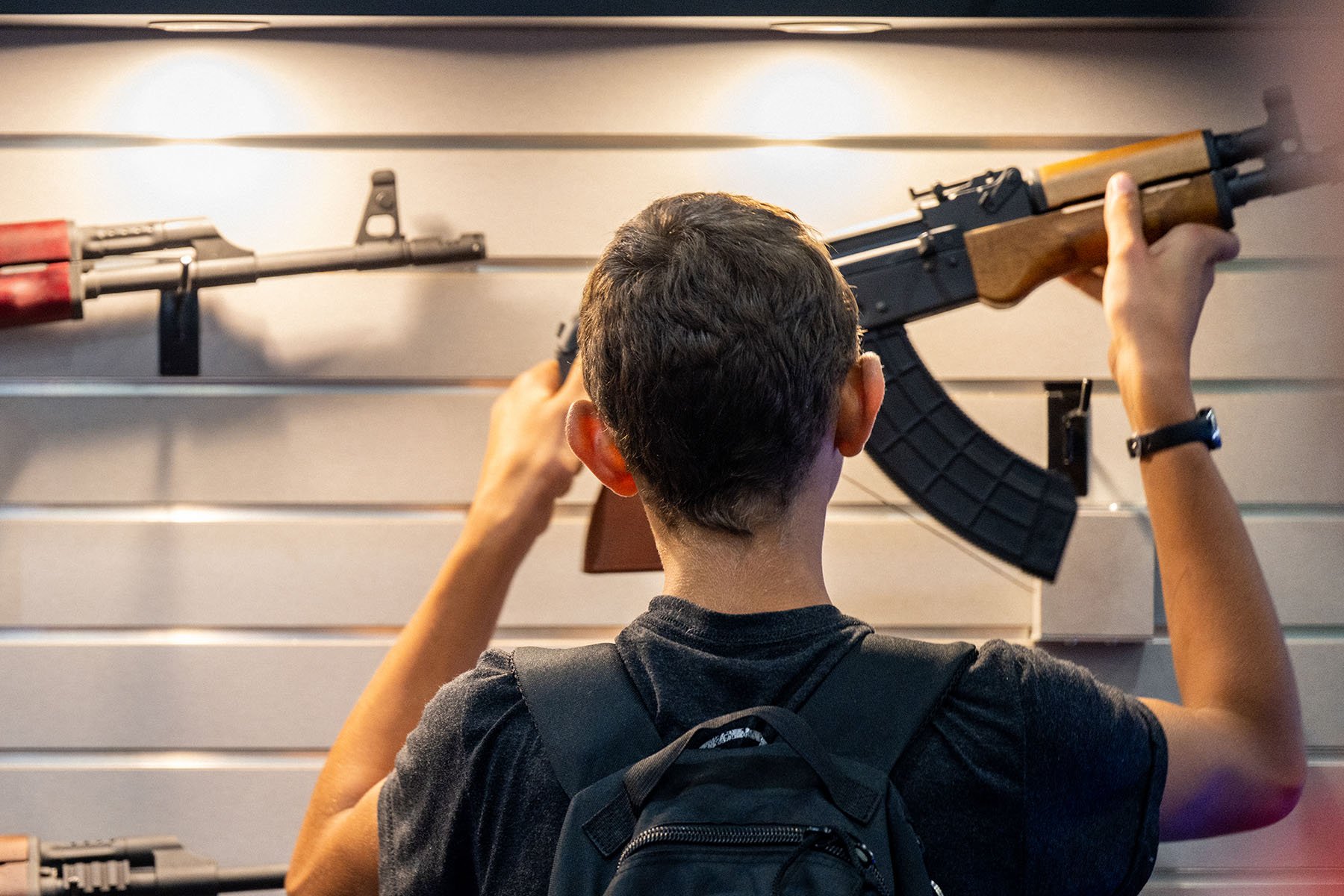Your trusted source for contextualizing health and safety news. Sign up for our daily newsletter.
Young Americans who identify strongly with gun use and gun ownership often hold male supremacist beliefs and racial resentment.
The young people who are most closely associated with guns are more likely to be White people who have worse symptoms of anxiety or depression, according to new research conducted by Everytown for Gun Safety, American University’s Polarization and Extremism Research and Innovation Lab (PERIL) and the Southern Poverty Law Center (SPLC). The research also found that men were more familiar with and agreed more with the following “gun narratives”: “Guns allow the weak to stand up to the strong,” “People should buy guns now because society might collapse in our lifetime;” “It isn’t fair that the actions of a few troubles individuals should have a negative effect on the gun rights of good Americans who have done everything right;” “Guns are the best way to defend yourself, loved ones and your community;” and “Guns bring families together.”
This first-of-its-kind look at American youth’s attitudes about gun violence polled over 4,000 American young people between the ages of 14 and 30 from a nationally representative sample over the past year. The researchers, who also conducted qualitative focus groups with participants, found that youth with stronger male supremacist and racist attitudes tend to hold stronger beliefs that adults in schools should be armed, feel safer with guns than without guns, and have stronger trust in the police.
A number of beliefs and experiences corresponded to higher measures of male supremacy. The higher the number of experiences a person has had related to injuries or deaths from gun violence, the higher the belief respondents held that guns defend minorities, and the higher the belief that the Second Amendment gives Americans the right to overthrow the government, all correlated with higher scored measures of male supremacy.
-
Read Next:
Pasha Dashtgard, the director of research at PERIL and an expert on male supremacy and online radicalization, said one factor propelling this sentiment is a shifting economic landscape in America.
“In places of economic instability, men are shifting from this attitude of man as provider to man as protector,” he said. “You may not be able to, as a man, be the primary breadwinner, but you can — through acquiring guns and the willingness to use guns for violence — reclaim your masculinity as a protector.”
Even in young people, this sentiment was notable and behind many of the things that participants expressed to the researchers during interviews. Dashtgard said this speaks to a larger cultural dynamic at play currently, where many White men are feeling unsure of how to articulate themselves as men in current society. As a result, many young men are turning to guns as an “unimpeachable access to masculinity.”

Dashtgard said that for many young men, developing a relationship with guns as a way to bolster their sense of male identity starts at a very young age, when young boys are often unwittingly exposed to “a lot of really toxic ideas and a lot of really potentially radicalizing content” through social media. He says while many parents dismiss concerns over what children are seeing — and the potential for radicalization — on social media as overblown “wokeness,” he said most parents would be shocked to find that their children are interacting with white supremacist recruiters while playing video games and watching Twitch streams.
“Media literacy is really important,” Dashtgard said.
In addition to making sure children are taught media literacy, Angela Ferrell-Zabala, the executive director of Moms Demand Action, a part of the Everytown for Gun Safety network, told The 19th that parents also need to be aware of what media their children are consuming — and aware of the ways that the gun advocates have helped position media messages designed to influence their sons, as this new research shows.
“This research tells us a lot about where we need to go from here and it confirms just how intertwined the gun culture promoted by the gun lobby is with hate-filled ideologies,” Ferrell-Zabala said.
She noted that part of Everytown’s work on gun safety includes calling attention to the way guns and gun accessories are frequently marketed to young boys and men. Ferrell-Zabala pointed to campaigns such as Bushmaster’s “reissue your man-card,” and an ad from Kahr Firearms that was posted during the Black Lives Matter protests of 2020 that portrays Kyle Rittenhouse — the man who as a then-17-year-old traveled to Kenosha, Wisconsin during the protests there following the killing of a Black man in the summer of 2020 and shot three people, two of them fatally — as a hero.
“I think we need to talk about why, when young men and boys are engaging with content about guns and American gun culture, they increasingly find themselves holding hateful beliefs about sexism and racism,” Ferrell-Zabala said of the findings of this new research. “The rhetoric of the gun lobby has long included racist and sexist overtones and dog-whistles, which we may assume only reaches the older generations in our country — but what our research shows is that this rhetoric does seem to be sticking with young boys and men.”
In his own research, Dashtgard regularly sees how low the bar to entry is for young men interacting with male supremacist and white supremacist content.
“This isn’t a case of somebody typing in ‘the Holocaust isn’t real,’ but a 14-year old boy who is nervous about talking to women and going on the Internet and searching for tips for how to do that.”
From that simple search, he said, many young men are quickly entering into a world of “really awful content” that is rooted in male and white supremacist ideology.
“As feminist discourse has entered into mainstream conversation, there has been an understandable focus on the ways patriarchy has impacted women,” Dashtgard said. “There hasn’t been articulated as clearly an understanding of how patriarchy affects boys and men.”
As a result, many boys and men are turning to the Internet for answers. There, Dashtgard said, “white supremacist and Stormfront recruiters [are] coming into those forums” so that men looking for answers are met with ideas that often lead them to violence rooted in feelings of hatred and resentment towards women and racial minorities.
The research from Everytown, PERIL and the SPLC also found that 42 percent of young people said they had easy access to guns in their homes. Dashtgard said that talking about “the gun access problem is too late” — and instead, more focus needs to be put on what is driving men to pick up guns and use them in violent ways.
“We need to be targeting young people earlier, and we need to be addressing why are you feeling so angry, what did you read, who did you hear from that women are the ones responsible for your anger?” Dashtgard said.







